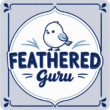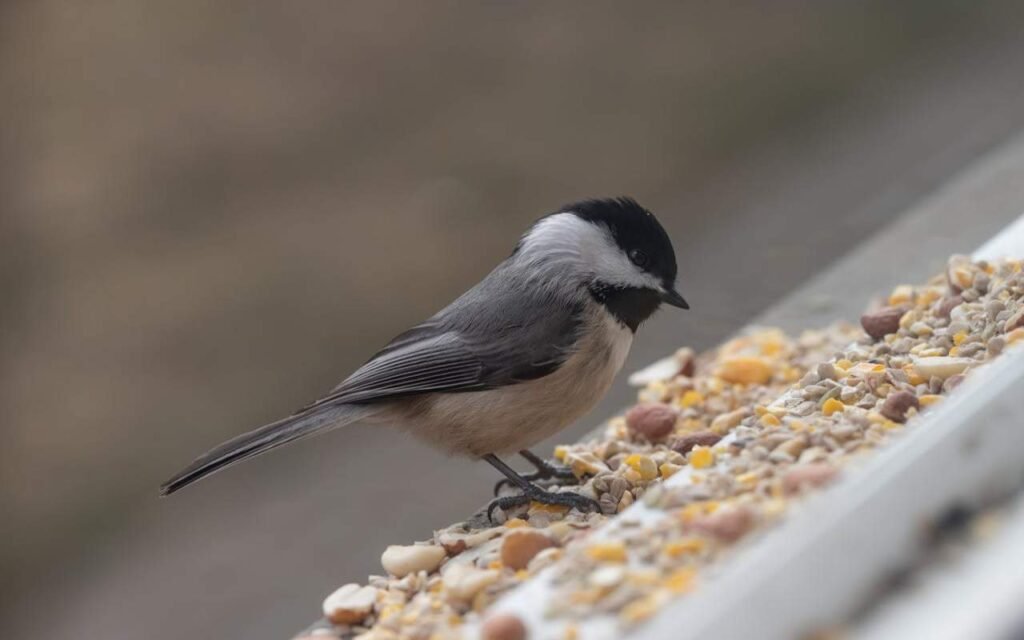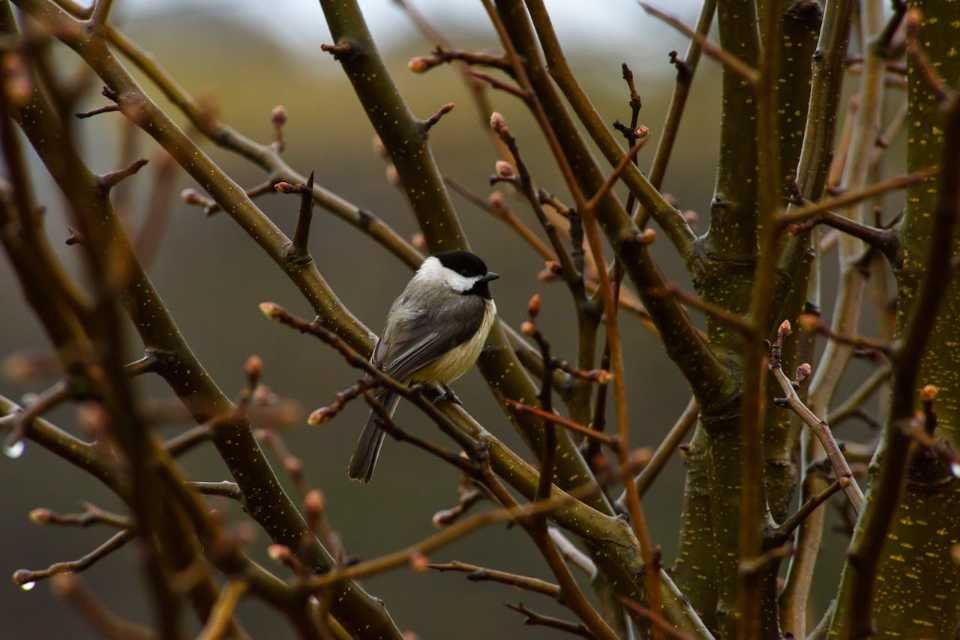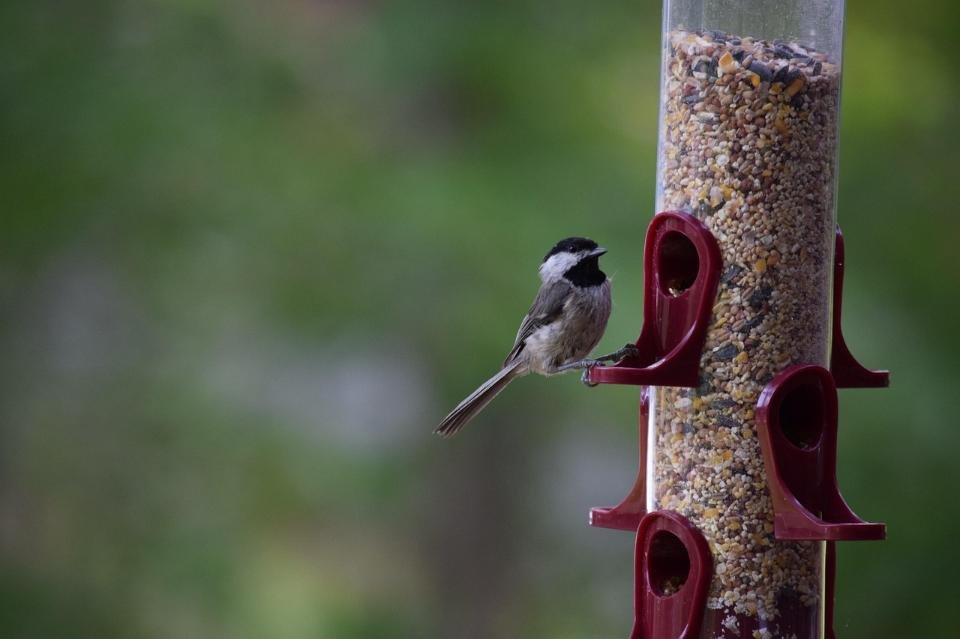If you’ve ever had a chickadee zip past your feeder and snatch a seed before you could even blink 😲, you know one thing: these little birds do not waste time. They’re fast, bold, and honestly kind of hilarious to watch. So, what do chickadees eat when they’re not raiding your bird feeder? Spoiler: it’s way more than you’d think.
I’ve been birdwatching for years, and chickadees are hands down one of my favorite backyard visitors. They’re tiny but fearless, they have that adorable “chick-a-dee-dee-dee” call, and they’ll happily eat right out of your hand if you’re patient. But their menu isn’t just about grabbing sunflower seeds and bouncing. These birds are surprisingly versatile eaters.
So, let’s break it down. Here’s the full scoop on what fuels chickadees, from bugs to berries to all the goodies you can put in your feeders.
Chickadees Eat a Lot More Than You Think
The short answer: chickadees are omnivores. They eat both plants and animals, depending on the season and what’s available.
In summer, they go heavy on insects and spiders. In winter, they switch to seeds, nuts, and berries (plus whatever they managed to stash away earlier). It’s kind of like how we switch from salads in July to comfort food in January—different weather, different cravings.
So what’s on the chickadee menu? Let’s take it piece by piece.
Insects: The Chickadee’s Protein Shake
Ever wonder why chickadees look so energetic? It’s because they eat a ridiculous amount of insects. During the warmer months, bugs make up the majority of their diet.
Here’s what chickadees love to snack on:
- Caterpillars (they’ll feed these to their chicks too)
- Spiders (yes, spiders count as part of their “meat” diet)
- Beetles
- Aphids
- Moths and their larvae
- Small flies
These high-protein snacks are basically chickadee fuel. If you’ve ever watched one hop around your trees like it’s on a bug-hunting mission, that’s exactly what’s happening.
And FYI, if you hate mosquitoes, you should be team chickadee. They help keep pest populations down. Pretty good deal, right?
Seeds: The Classic Chickadee Feeder Food
When people think chickadees, they usually think black oil sunflower seeds. And for good reason. Chickadees love them. They’ll grab a seed, fly off to a branch, and crack it open with their beak like a tiny jackhammer.
Other seeds they’ll happily eat:
- Striped sunflower seeds (harder shell, but they manage)
- Safflower seeds (a little less popular, but they’ll still eat them)
- Pumpkin seeds (yes, they’ll work on these if you put them out)
- Millet (though this is more of a sparrow favorite, chickadees will snack if it’s there)
If you want to keep chickadees around, sunflower seeds are your best bet. They’re like the “pizza and fries” of the chickadee world.
Nuts: Tiny Bird, Big Appetite
Here’s something people don’t always realize: chickadees go nuts for, well, nuts.
They’re especially fond of:
- Peanuts (unsalted, shelled or in the shell if you want to watch them work for it)
- Almonds
- Walnuts
They don’t just eat them right away, either. Chickadees have this fun habit of stashing food for later. They’ll grab a nut, tuck it into a tree crevice, and remember where it is weeks later. Honestly, their memory puts mine to shame.
Pro tip: If you put out peanut feeders, expect a steady stream of chickadees. They’ll keep coming back until you run out.
Berries: Nature’s Chickadee Dessert
In fall and winter, berries become a big part of the chickadee diet. They’ll eat whatever’s available in your area, including:
- Elderberries
- Bayberries
- Dogwood berries
- Holly berries
- Poison ivy berries (yes, they can eat them safely, and no, you shouldn’t try this at home)
Berries give them sugar for quick energy, which is important when you’re a tiny bird trying not to freeze in subzero weather.
If you’ve ever seen chickadees flitting around berry bushes in winter, now you know why.
Suet: The Winter Lifesaver
Here’s where we get into the good stuff for bird feeders. Suet is basically a lifesaver for chickadees in cold weather. It’s high in fat, which they desperately need when the temperature drops.
You can buy suet cakes or make your own with:
- Rendered beef fat
- Peanut butter
- Seeds
- Dried fruit
I always hang a suet feeder in my yard in winter, and the chickadees are usually the first to show up. They’ll take little bites, zip away, and then come back a dozen times in an hour. It’s like watching someone raid the fridge at midnight.
Human Food Chickadees Will Try
Okay, I don’t recommend turning your backyard into a buffet, but chickadees can and will sample human food if you leave it out.
Things they might nibble on:
- Unsalted crackers
- Bread crumbs (not super healthy, so don’t overdo it)
- Oats
But honestly? Stick with seeds, nuts, and suet. Chickadees don’t need potato chips, no matter how much they act like they do.
Seasonal Eating Habits
Chickadees change their diet depending on the time of year. Here’s a quick breakdown:
Spring and Summer:
- Mostly insects, spiders, and caterpillars
- Occasional seeds and nuts
Fall:
- Berries, seeds, and nuts
- Stashing food for winter
Winter:
- Seeds, nuts, suet, and stored food
- Berries if they’re available
This seasonal shift is why chickadees survive harsh winters when other small birds don’t. They’re smart, adaptable, and basically the survivalists of the bird world. By planting native trees and shrubs that produce seeds and berries throughout the year, you can support chickadees naturally—see our full list of native plants for birds.
What to Put in Your Feeder to Attract Chickadees
So you’re wondering, “What should I actually put out to attract more chickadees?” Here’s your cheat sheet:
- Black oil sunflower seeds (the gold standard)
- Peanuts (shelled or unshelled, unsalted)
- Suet cakes (especially in winter)
- Mixed nuts (again, unsalted only)
- Berries (fresh or dried)
Skip the cheap filler seed mixes with lots of corn and milo. Chickadees usually ignore that stuff, and you’ll just end up feeding pigeons and squirrels.
Do Chickadees Drink Water Too?
Yep, just like any other bird, chickadees need water. They’ll drink from birdbaths year-round and even hop into shallow ones for a quick bath.
If you live somewhere with cold winters, consider a heated birdbath. Chickadees will use it, and you’ll get bonus bird-watching opportunities when everything else is frozen solid.
My Personal Take on Chickadees at Feeders
I’ll be honest, chickadees are the birds that got me hooked on backyard birding. They’re small but fearless, and they’ll dart in for food even when bigger birds are hogging the feeder.
One winter, I had a single chickadee that would sit on my suet feeder and chase away starlings. Watching this tiny puffball take on birds three times its size was pure entertainment. That’s chickadees in a nutshell—small but mighty.
Quick FAQ About Chickadee Diets
Do chickadees eat mealworms?
Yes! They’ll happily eat both live and dried mealworms.
Do chickadees eat wasps?
They’ll eat the larvae, not usually the adults.
Do chickadees eat at night?
Nope, they’re strictly daytime feeders.
Do chickadees eat from your hand?
Yes, if you’re patient. Sunflower seeds and peanuts are your best bet.
Conclusion
So, what do chickadees eat? Pretty much everything they can get their little beaks on. Bugs in the summer, seeds and nuts in the fall, suet and berries in the winter. They’re adaptable, clever, and way tougher than they look.
If you want to attract chickadees to your yard, stick with sunflower seeds, peanuts, and suet. Add a birdbath for good measure, and you’ll have these little guys visiting daily.
And honestly? Once you start watching chickadees, you’ll probably get hooked like I did. They’re bold, funny, and endlessly entertaining. So fill your feeder, sit back, and enjoy the show. 🙂




